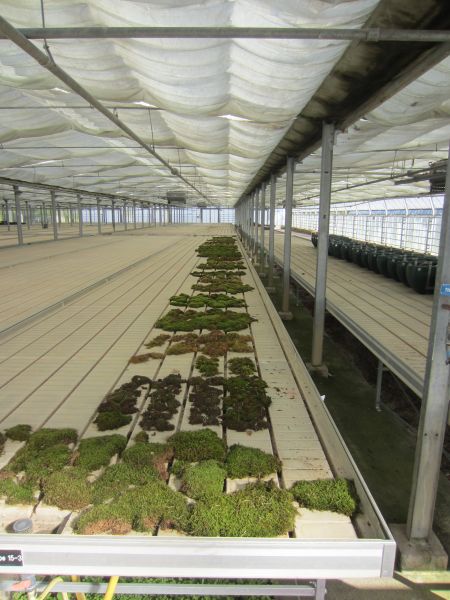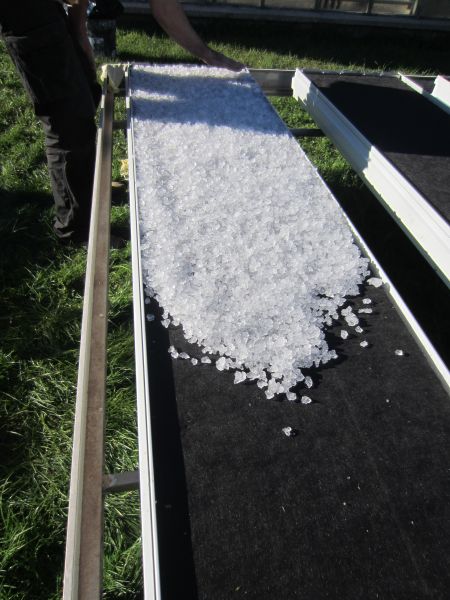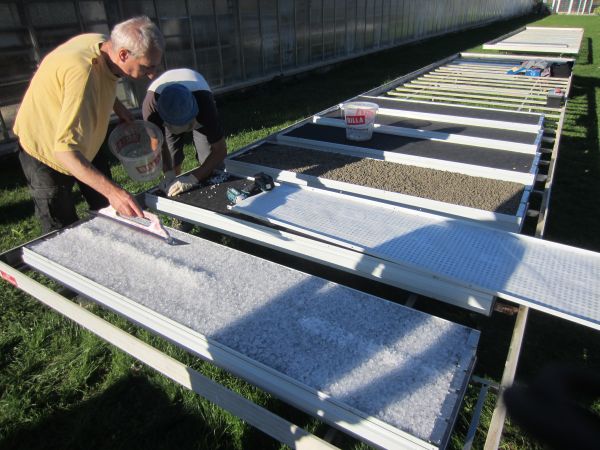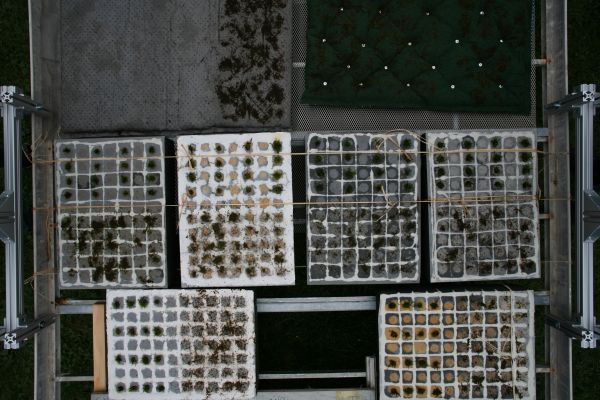Green facades with moss plants
Short Description
This document reports on the efforts conducted in the framework of the "BE-MO-FA" project. This project focused on the development of moss-covered facade panels by selecting and testing of appropriate (i) Moss species, (ii) new water storage and adhesive substrate materials, (iii) materials for support panels, and (iv) technical construction details, to achieve (i) year-round green, (ii) sustainable, (iii) maintenance-friendly, and (iv) inexpensive green building facades.
Starting point/Motivation
There is a large demand for green facades on buildings and urban structures, both by city dwellers and by planners. Currently such realizations are barely seen or realized successfully. The two major strategies deployed come with some downsides:
- Climbing plants (with and without trellises) needs root space beneath the facade surface and often cause damage to the adjacent building. Moreover, they require a large amount of maintenance.
- Façade-integrated plant pots are rather expensive. it results in high maintenance costs and implies technically problematic construction details (thermal bridges).
A special case is the coverage by algae and lichen on ETICS (exterior thermal insulation compound systems). This unintended "greening" is often perceived as unwanted dirt. In the framework of this project it will not be discussed in detail.
Contents and Objectives
This project was intended to discover a third strategy for green facades: Moss-covered façade panels are explored. In this context, major requirements toward such facades were defined:
- Facades should be green the whole year
- The plants should be durable (long-life) and their maintenance extensive
- The construction and maintenance of the overall façade should be inexpensive.
Methods
The described objectives are explored via selection and empirical testing of different input materials and construction forms. These include
- Suitable moss species
- Materials for water storage and adhesive substrate for support panels
- Materials for support panels
- Development of technical construction details.
Results
The results of the project should act as starting point for a follow-up project focusing on realisation of facades with business partners. Generally speaking, the project proofed the high potential of moss plants for building greening purposes. They offer different ways to integrate the plants into the building's envelope within different architectural design options. Moreover, the advantageous effects of the implementation of such plants, such as sound absorption, dust control, air-humidity balancing, dampening summer-overheating and urban heat island effects, and psychological benefits for the building's users have to be considered.
Prospects / Suggestions for future research
The developments and realizations explored in this project can act as starting point of future development efforts. Some of the options were identified as dead-ends, which might help to avoid problems in future projects. In general the high potential of moss plants for simple and extensive greening option for buildings can be considered as promising, therefore future efforts should be initialized.
Project Images
Terms of use: The pictures listed underneath the header “Project Pictures” originate from the projects in the frame of the programmes City of Tomorrow, Building of Tomorrow and the IEA Research Cooperation. They may be used credited for non-commercial purposes under the Creative Commons License Attribution-NonCommercial (CC BY-NC).
Project Partners
Project management
Department of Building Physics and Building Ecology, Vienna University of Technology
Project or cooperation partners
- Department of Conservation Biology, Vegetation - and Landscape Ecology, University of Vienna - Priv.-Doz. Dr. H. Zechmeister et al.
- Höhere Bundeslehr- und Forschungsanstalt für Gartenbau Schönbrunn
Contact Address
Abteilung Bauphysik und Bauökologie, TU Wien
Univ.Prof. Dr. A. Mahdavi
Karlsplatz 13/4
A-1040 Wien
Tel.: +43 (1) 58801 27003
E-Mail: bpi@tuwien.ac.at
Web: www.bpi.tuwien.ac.at





